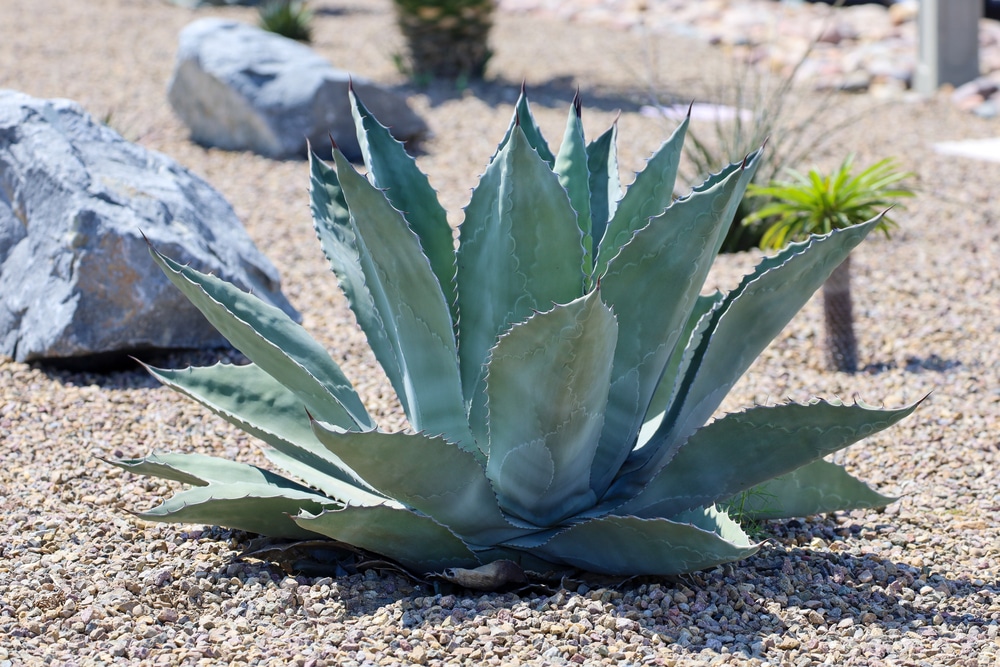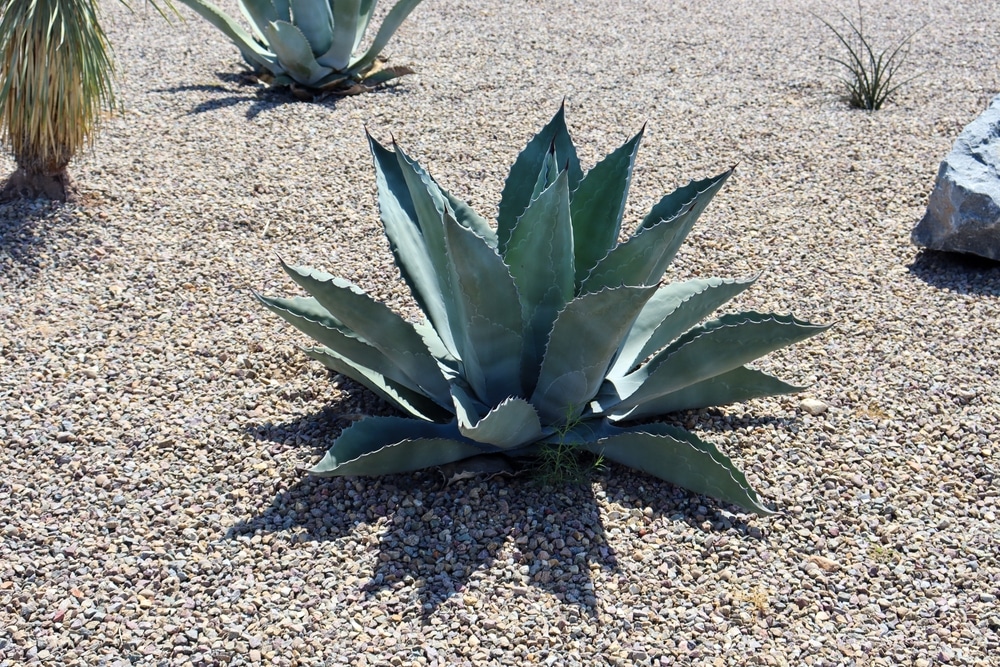The Agave Blue Flame is a gorgeous hybrid succulent. Its blue-green leaves sweep gently inward in a large rosette, giving it the appearance of an evergreen flower. If you’re interested in adding one of these succulents to your yard, you’ll need to know how to care for this unique plant.
| Botanical Name | Agave tequilana |
| Common Name | Agave Blue Flame |
| Plant Type | Perennial |
| Flower Color | Blue-green |
| Size When Mature | 24-36 inches |
| Bloom Time | Occasionally in the fall |
| Sun Requirements | Full sun-partial shade |
| USDA Hardiness Zones | 5-11 |
| Soil PH Range | 6.5-7 |
| Soil Type | Slightly acidic |
| Water Needs | Low |
| Native Area | Southern United States, Mexico |
What You Need To Know About Agave Blue Flame
Succulents are incredible plants that have adapted to survive in some very desolate environments. Although many varieties today are ornamental, most of them can still tolerate long periods of drought and extended periods of sun exposure.
The Blue Agave Flame is a succulent that needs little attention but creates a stunning point of interest in your yard or garden. Although it flowers rarely, it doesn’t need any extra foliage to make it an attractive addition to the scenery.
Before introducing this plant to your home, you should note that the sap inside of these plants can cause a rash or blistering in people with sensitive skin. Although they are generally sturdy, this won’t be an issue, it’s best not to let pets or children play near this plant.
How To Care for Agave Blue Flame
Caring for the Agave Blue Flame is incredibly straightforward, so if you are a new gardener, this is a great plant to take on. Here’s everything you need to know about growing and caring for a thriving Agave Blue Flame.
Light
This succulent is like many other succulents and will prefer plenty of direct light. The exception is during the mid-day in particularly hot places.
Although this succulent, like most others, is more likely to survive under such conditions, that doesn’t mean you should stress them out. Giving them a little extra water and some shade to protect them from scorching in the afternoons can help keep these plants vibrant.
Water and Soil Needs
Many succulents are susceptible to being overwatered and will require sufficient drainage to protect the roots. Sandy soil and gravel can be used for these plants as long as they can get sufficiently dry between watering. The pH balance of the soil should be slightly acidic, between 6.5 and 7.
Like many succulents, this plant doesn’t need much water. Once a week during the hottest part of the year should keep it comfortable. Once every 14 days during the wet season is more than enough. You should test the soil with your finger before watering to make sure that there is no moisture.
Temperature Requirements
This succulent can grow in hardiness zones five through 11; this means the Agave Blue Flame grows nearly everywhere in the United States. It will put up with quite a bit of heat but also does well in areas with temperatures above 20°F. This plant should be grown in warm, dry zones for best results.
Fertilizer
This succulent will appreciate fertilization in the growing season. Once or twice is more than enough for this plant. You should opt for a slow-release fertilizer or stick with organic compost. You can put it down right at the base of the plant.
Common Diseases
Although these plants are sturdy, they are susceptible to several diseases and conditions. If you have a particularly wet spring or summer, they can be prone to rot and fungus. You might notice a few other conditions in your Agave Blue Flame, such as:
- Anthracnose
- Crown rot
- Weevils
Agave Blue Flame Propagation
Propagation is the process of duplicating a plant. There are a few different ways to achieve this, and figuring out how to do it for your succulents isn’t difficult.
Many agave plants propagate best through coring. This technique creates damage to the plant’s growth point, forcing it to create new pups to survive. Although this may seem like irreparable damage to the plant, it’s the best method to ensure propagation.

